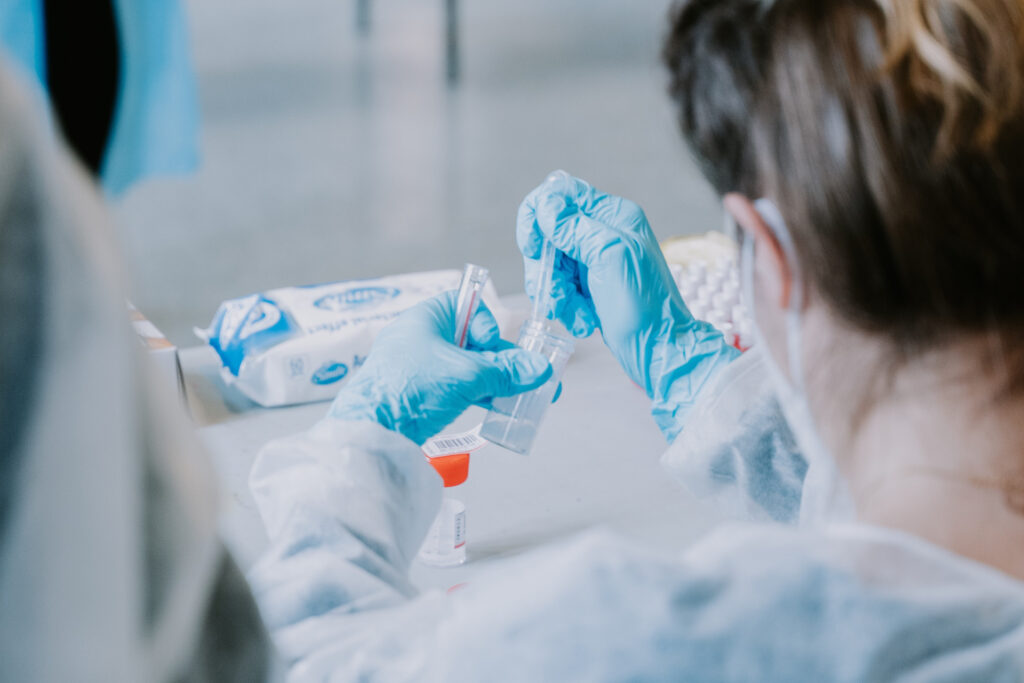

Roadmap Preview: Biomarker-Guided And Pharmacogenomic-Informed Dosing
On our Year in Review webinar, presenters Stephanie Hughes, PharmD, BCIDP, Clinical Applications Specialist, and Jon Faldasz, PharmD, BCPS, our Senior Director of Product & Customer Experience, shared a sneak peek at an exciting expansion on the horizon. In 2022, InsightRX will extend the InsightRX Nova platform beyond therapeutic drug monitoring (TDM) into two other categories: biomarker-guided dosing and pharmacogenomic-informed dosing.
Using Biomarker-Guided Dosing to Prevent Chemotherapy-Induced Neutropenia
To understand biomarker-guided dosing, it’s helpful to look at how TDM functions. In TDM, we feed a patient’s drug measurement through a pharmacokinetic model and compare it to predicted measured levels for that patient in order to create patient-specific pharmacokinetic parameters, which we then use to assess drug exposure and choose a treatment regimen. However, drug exposure in and of itself is rarely what we ultimately care about: instead, drug exposure is often a surrogate measure for some unmeasurable exposure-dependent outcome.
For example, with vancomycin, our goal is clinical cure via bacterial eradication, which in theory would be measured by the decrease in bacterial load. As we can’t feasibly measure that outcome, we instead use a pharmcokinetically measurable correlate of clinical cure and bacterial eradication: AUC.
In some situations, however, we can measure the desired exposure-dependent outcome, either directly or indirectly. In those cases, we can bypass the intermediary correlates entirely, instead using a value (or surrogate value) fed into a pharmacodynamic model to assess the impact of a potential dose, which we can similarly then adjust as needed to optimize outcomes. This is called biomarker-guided dosing, or BMx.
One example of this type of biomarker-guided dosing is the prevention of chemotherapy-induced neutropenia. In October 2021, we partnered with Memorial Sloan Kettering Cancer Center to develop a pharmacodynamic model that describes the direct relationship of drug exposure to quantitative changes in neutrophils. When patients start a chemotherapy regimen, we will track changes in their absolute neutrophil count (ANC) to plot a pharmacodynamic trajectory which will reveal a predicted nadir and a timeline for ANC decline. Clinicians can then adjust the chemotherapy regimen mid-stream in response to these predictions to ensure an optimal trajectory for ANC, without undue risk or loss of efficacy.
Paving the Way for Pharmacogenomic-Informed Dosing: Introducing InsightRX PGx
We are currently building a pharmacogenomic software solution, InsightRX PGx, that interfaces with our other solutions and finally brings clinically applicable and actionable value to pharmacogenetic and pharmacogenomic data. Accessing the software platform will be similar to InsightRX Nova, with options to launch InsightRX PGx either through a standalone web application or directly from within a patient chart in an EHR. When clinicians access InsightRX PGx, the software will request genetic and genomic information on the patient from central laboratories around the world.
Once this information is retrieved, InsightRX PGx will cross-reference the raw genetic data to established pharmacogenetic and pharmacogenomic databases and present the interpreted information to the clinician. Using the patient’s genomic data, the platform will then provide the clinician an individualized, quantitative patient-specific dosing guide, with application to the patient’s current treatment as well as any future drug therapy. If the drug in question is represented in InsightRX Nova, then the patient’s pharmacogenetic data is imported into InsightRX Nova and is used to aid in patient-specific pharmacokinetic and pharmacodynamic predictions, adding another level of individualization to the modeling and predictions.
As aggregated pharmacogenomic-informed dosing data is integrated into the InsightRX Apollo analytics solution, clients can view their own data and search for improvement opportunities. At the same time, the InsightRX Data Science team can analyze this data to look for new covariates and new ways to refine our pharmacokinetic models within InsightRX Nova. This cycle of continuous improvement generates more precise, accurate dosing with every iteration, bringing us closer to our goal of delivering optimized dosing for every patient.

